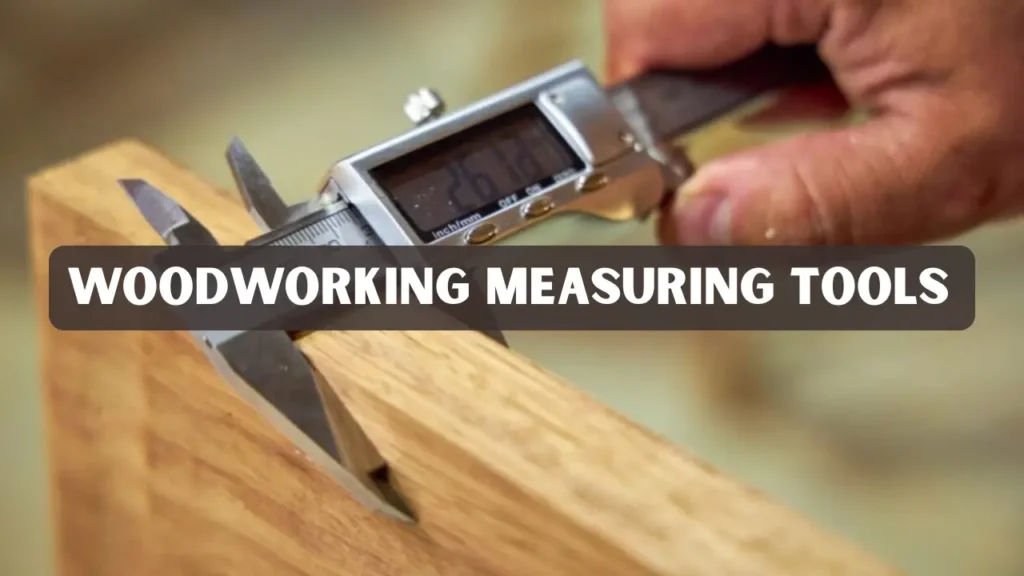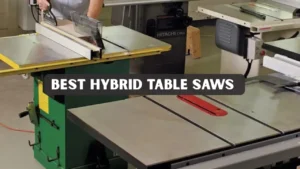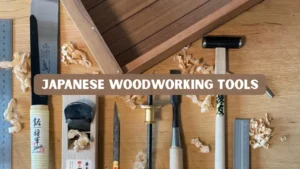Key Takeaways
- Using high-quality woodworking measuring tools ensures perfect fits, angles, and symmetry in all woodworking projects.
- Measuring accuracy saves time, prevents costly mistakes, and improves craftsmanship.
- Each tool serves a specific purpose, from marking layouts to measuring depths and diameters.
- Consistent calibration and proper storage extend the life of precision tools.
- Investing in accurate measuring instruments increases efficiency and confidence in your work.
Introduction to Accurate Woodworking Measurements
Accurate measurement is where true craftsmanship begins. Every joint, curve, and cut relies on precision. Even a small measurement error can cause gaps, misaligned pieces, or wasted material. Reliable woodworking measuring tools help you plan, design, and execute woodworking tasks with professional-level accuracy.
Whether you’re building a table or turning a wooden bowl, having dependable measuring instruments ensures each piece fits seamlessly. From classic rulers to advanced digital calipers, the right combination of tools improves workflow and enhances the overall quality of your projects.
10 Essential Woodworking Measuring Tools
Accurate measurement is the cornerstone of excellent craftsmanship. Below are the ten essential woodworking measuring tools that every beginner and professional woodworker should keep in their shop.
1. Tape Measure
A tape measure is the most common and versatile measuring tool found in every workshop. It’s perfect for measuring lengths, widths, and distances. Opt for one with a sturdy locking mechanism and easy-to-read markings.
Tips:
- Check the hook alignment to avoid measurement errors.
- Choose one that displays both metric and imperial units.
- Retract the tape carefully to protect its markings.
2. Steel Ruler
A steel ruler provides unmatched precision for straight-line marking and flat measurements. Its rigid body prevents bending errors, making it ideal for layout work.
Why it’s essential:
- Durable and long-lasting compared to plastic rulers.
- Offers consistent accuracy for marking straight edges.
- Helps check alignment and squareness.
Pro Tip: Clean the ruler after each use to avoid rust and maintain visibility.
3. Combination Square
A combination square helps measure 90° and 45° angles, mark depths, and check for squareness. Its adjustable head makes it useful for layout and marking multiple angles.
Key Features:
- Sliding ruler with precise measurements.
- Integrated level for alignment checks.
- Perfect for marking mortises and tenons.
Expert Insight: Always lock the head securely before marking to prevent misalignment.
4. Try Square
The try square ensures perfect right angles, crucial for accurate joinery and assembly. It’s one of the simplest yet most reliable measuring tools.
Benefits:
- Fixed blade guarantees a 90° reference.
- Ideal for checking the squareness of boards.
- Suitable for layout lines and trimming accuracy.
Usage Tip: Regularly test your try square against a known square to maintain reliability.
5. Marking Gauge
A marking gauge helps draw parallel lines to an edge, ensuring consistent joinery measurements. It’s essential for mortise and tenon work, grooves, and layouts.
Advantages:
- Delivers uniform scribing lines.
- Offers better control than freehand marking.
- Reduces errors in joinery depth.
Maintenance Tip: Keep the pin sharp for clear marks and handle with gentle pressure to avoid wood tear-out.
6. Digital Caliper
A digital caliper is ideal for fine measurements of thickness, diameter, and depth. It’s one of the most accurate wood tools available.
Key Benefits:
- Provides digital readings for easy interpretation.
- Switches between inches and millimeters instantly.
- Excellent for woodturning precision.
7. Bevel Gauge (Sliding Bevel)
The bevel gauge is perfect for transferring or copying angles between pieces. Its blade locks in place for consistent measurements.
Why it matters:
- Saves time when duplicating complex angles.
- Excellent for trim and furniture work.
- Ensures repeat accuracy across components.
Pro Tip: Use masking tape to label each angle setting on complex projects.
8. Protractor or Digital Angle Finder
A protractor or angle finder measures precise angles for miters, bevels, and dovetails. Digital models offer faster and more accurate readings.
Advantages:
- Improves accuracy in saw blade settings.
- Reduces cutting errors.
- Helpful for both beginners and professionals.
Expert Advice: Always reset the digital angle finder before use for best results.
9. Divider (Compass)
A divider or compass is excellent for marking equal distances or drawing circles. It’s particularly useful for layout design and repetition tasks.
Uses:
- Transfer measurements easily between parts.
- Mark hole spacing and arcs.
- Maintain symmetry in design work.
Tip: Sharpen both tips to create crisp, fine marks.
10. Laser Distance Measurer
The laser distance measurer is a modern advancement that provides instant measurements over long distances. It’s highly accurate and efficient for large projects.
Benefits:
- Measures areas and volumes quickly.
- Eliminates the need for a helper.
- Perfect for room layouts and cabinet installations.
Practical Example: Carpenters use it to plan furniture spacing and workshop setups efficiently.
How to Choose the Right Tools for nMeasuring
Choosing dependable woodworking measuring tools involves more than selecting what’s available at the hardware store. Here’s what to consider:
- Accuracy: Look for certified precision and clear markings.
- Durability: Stainless steel tools resist wear and deformation.
- Readability: Laser-etched markings don’t fade over time.
- Versatility: Select tools that serve multiple purposes.
- Comfort: Ergonomic designs make extended use easier.
Expert Note: A few well-made tools often outperform a cluttered collection of low-quality ones.
Common Measuring Mistakes and How to Avoid Them
Avoiding mistakes is as important as choosing the right tools. Here are common errors and how to prevent them:
- Switching between metric and imperial units mid-project.
- Using bent or uncalibrated rulers.
- Measuring in poor lighting conditions.
- Failing to verify zero points on digital tools.
- Forgetting to double-check critical measurements.
Quick Fix: Always measure twice and cut once, accuracy saves both time and material.
Expert Tips for Accurate Woodworking Measurements
Every professional knows that precision defines quality. Follow these practical tips:
- Use the same measuring tools throughout one project. This ensures consistency and prevents small errors from accumulating.
- Mark lines with a sharp pencil or marking knife. Accurate lines make cutting and assembly much easier.
- Avoid excessive pressure that can distort readings. Gentle handling keeps your measurements precise and reliable.
- Keep tools clean and stored in a controlled environment. Proper care prevents rust and maintains accuracy.
- Check calibration regularly. This guarantees that every measurement remains correct and trustworthy.
According to Wikipedia, measurement and layout accuracy form the foundation of both traditional and modern woodworking, influencing craftsmanship for centuries.
Measuring Tools for Woodturning Projects
Woodturning requires specialized accuracy. These wooden measuring tools enhance precision when working on a lathe:
- Calipers: Measure wall thickness and diameters.
- Depth Gauge: Ensures uniform depth for bowls.
- Templates: Check symmetry and profile consistency.
- Dial Indicators: Ensure perfect alignment during turning.
Tip: Combine digital calipers with paper templates for maximum control and accuracy.
Maintaining and Storing Measuring Tools
Proper maintenance extends tool life and ensures reliable readings.
Cleaning:
- Wipe tools after every session.
- Apply light oil to prevent corrosion.
Storage:
- Use padded boxes or tool rolls.
- Keep tools dry and away from dust.
Calibration:
- Recalibrate digital tools periodically.
- Test rulers and squares for straightness every few months.
Clean, accurate, and organized tools lead to faster, more professional results.
Key Considerations Before Buying Measuring Tools
Before investing in new tools, evaluate your needs:
- Project Scale: Large furniture needs different tools than small details. The project size affects what you use.
- Material Type: Hardwoods need precise tools for clean cuts. Softer woods are easier but still benefit from accuracy.
- Budget: Good tools are worth the cost. Cheap tools can break or be inaccurate.
- Reviews: Look at feedback from real users. They reveal strengths and flaws.
- Brand Reputation: Pick trusted brands with a good track record. Reliable brands last longer and work better
Well-chosen measuring tools simplify every stage of your woodworking process.
Conclusion
Measuring is more than just numbers, it’s the foundation of fine craftsmanship. Accurate woodworking measuring tools give woodworkers confidence, precision, and efficiency in every cut. From traditional try squares to digital calipers and laser measurers, each tool contributes to perfect alignment and professional results.
Take care of your tools, measure carefully, and never underestimate the value of precision. In woodworking, accuracy defines excellence.
FAQs
1. What is the most important measuring tool for woodworking?
The tape measure remains essential due to its versatility and portability. Every project starts with it.
2. How can I improve my measuring accuracy?
Use sharp marking tools, maintain calibration, and work under proper lighting.
3. Are digital measuring tools better than manual ones?
Digital tools increase speed and reduce errors, while manual tools are reliable for layout and marking.
4. How do I protect measuring tools from rust?
Store them in a dry space, use silica gel packs, and apply light oil on metal surfaces.
5. Can beginners use advanced measuring tools?
Absolutely. Digital calipers and laser measurers make learning more precise and enjoyable.




